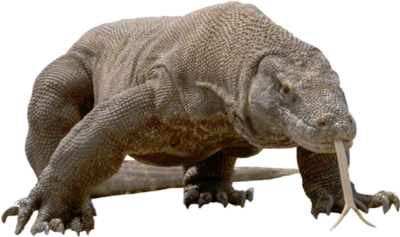None.
The official discord link if you wish to join the discord: https://discord.gg/j5RKwCvAFu
Support the wiki on our official Ko-Fi page or Patreon page!
User:Volt12121/Sandbox

Background
The red kangaroo (Osphranter rufus) is the largest of all kangaroos, the largest terrestrial mammal native to Australia, and the largest extant marsupial. It is found across mainland Australia, except for the more fertile areas, such as southern Western Australia, the eastern and southeastern coasts, and the rainforests along the northern coast.
Statistics
Tier: 9-C, Higher with piercing damage
Name: Red kangaroo, Osphranter rufus
Origin: The Real Wolrd
Sex: Varies (Can be Male or Female)
Age: Varies (Usually live up to about 30 years)
Classification: Mammal, Marsupial
Status: Active (Red Kangaroo are are listed as least concern[1])
Alignment: Unaligned (Animals have no real moral compass asides from very primitive ones, thus they fall under no true alignment as they're not inherently evil, good, or neutral)
Dimensionality: 3-D
Attack Potency: Peak Human level (Red Kangaroos can cause broken bones, puncture wounds, lacerations and bruises on humans[2] and dogs[3]), Higher with piercing damage (Red Kangaroos have a bite force of 925psi
Durability: Peak Human level
Striking Strength: Peak Human Class
Lifting Strength: Peak Human (Komodo Dragons need 5 men in order to overpower them)
Travel Speed: Average Human normally (Red Kangaroos normally hop at speeds of 12 mph.), Superhuman at top speed (At top speed, Red Kangaroos can hop at 35 mph[4])
Combat Speed: Superhuman
Reaction Speed: Superhuman
Stamina: High (Komodo Dragons can swim long distances between islands.[5])
Range: Extended Melee (Komodo Dragons are 10 feet tall)
Intelligence: Animalistic
Powers and Abilities
Superhuman Physical Characteristics, Enhanced Senses (Komodo Dragons can see objects as far away as 985 feet[6] They also can smell carrion, or rotting flesh, up to 2.5 miles away. [7]), Natural Weaponry, Poison Manipulation and Paralysis Inducement(Komodo Dragons have a venomous bite which delivers toxins that stop the blood from clotting and cause muscle contractions and paralysis [8]), Stealth Mastery (Komodo Dragons hunt by sneaking on their prey[9]), Observation (Type 1; Any living being or object that is capable of making measurements using any of the five senses influence reality in subtle ways, a phenomenon known as the observer effect)
Resistance to Poison Manipulation (Komodo Dragons are immune to their venom[10])
Standard Equipment
Nothing Notable
Other
Standard Tactics: The Komodo Dragons' hunting strategy is based on stealth and power. They wll hide away from their opponent before jumping on them and biting them with their venomus fangs
Weaknesses: The only areas that aren't reinforced by their chainmail-like hide are around their eyes, nostrils, pineal eye & mouth margins
References
- ↑ Red kangaroos are listed as least concern with a stable population on the UUNC Red List. They are abundant throughout their Australian range but are susceptible to habitat destruction and drought.
- ↑ Injuries caused by kangaroos include broken bones, puncture wounds, lacerations, bruises, and scratches. There are also reports of kangaroos attacking children.
- ↑ Kangaroos are dangerous to dogs because they can cause serious injuries such as broken bones, punctured lungs, and internal bleeding. If you find a dog injured after being attacked by a kangaroo, call your local animal control agency immediately.
- ↑ Kangaroos are unable to run, but they are excellent hoppers, a movement called saltation. The red kangaroos that live at the Sacramento Zoo can reach speeds of 35 mph, with their average hopping speed closer to 12 mph.
- ↑ Komodo dragons are quadrupeds, meaning that they stand and walk on all four legs. Although these animals are quite large and heavy, they are remarkably agile climbers and can run with a surprising amount of speed. They are also capable swimmers and sometimes swim long distances between islands. Komodo dragons are solitary by nature.
- ↑ Monitors can see objects as far away as 985 feet (300 meters), so vision does play a role in hunting, especially as their eyes are better at picking up movement than at discerning stationary objects. Their retinas possess only cones, so they may be able to distinguish color but have poor vision in dim light.
- ↑ The Komodo dragon's sense of smell is its primary food detector. It uses its long, yellow, forked tongue to sample the air. It then moves the forked tip of its tongue to the roof of its mouth, where it makes contact with the Jacobson's organs. These chemical analyzers "smell" prey, such as a deer, by recognizing airborne molecules. If the concentration of molecules present on the left tip of the tongue is greater than that sample from the right, the Komodo dragon knows that the deer is approaching from the left. This system, along with an undulatory walk, in which the head swings from side to side, helps the dragon sense the existence and direction of food. At times, these reptiles can smell carrion, or rotting flesh, up to 2.5 miles (4 kilometers) away.
- ↑ The venom itself consists of over 600 toxins, a chemical arsenal that rivals those of many snakes. Many of these poisons are familiar and they greatly exacerbate the blood loss caused by the dragon's bite. They cause internal haemorrhaging from leaky blood vessels, prevent blood from clotting and cause muscle contractions and paralysis. Fry calculated that a typical adult dragon would need only 4mg of venom proteins to send a 40kg deer into toxic shock from collapsing blood pressure. A full venom gland packs at least eight times this amount.
- ↑ Although the Komodo dragon can briefly reach speeds of 10 to 13 mph (16 to 20 kph), its hunting strategy is based on stealth and power. It can spend hours in one spot along a game trail — waiting for a deer or other sizable and nutritious prey to cross its path — before launching an attack.
- ↑ The Komodo's bite may be deadly, but not to another Komodo dragon. Those wounded while sparring with each other appear to be unaffected by the bacteria and venom. Scientists are searching for antibodies in Komodo dragon blood that may be responsible.
Battle Records
None.
None.
Discussions (Link For Mobile Users):
| Discussion threads involving Volt12121/Sandbox |
